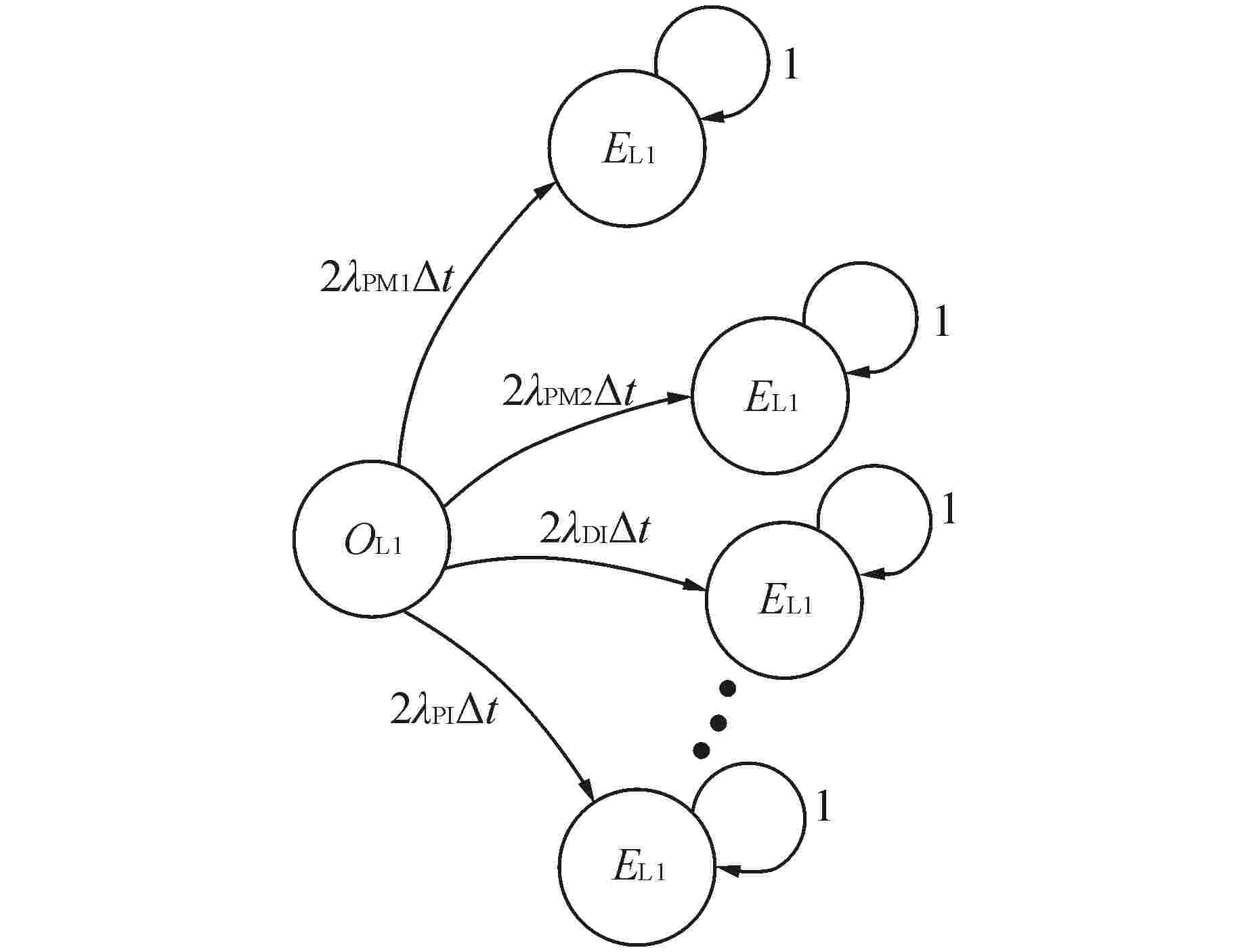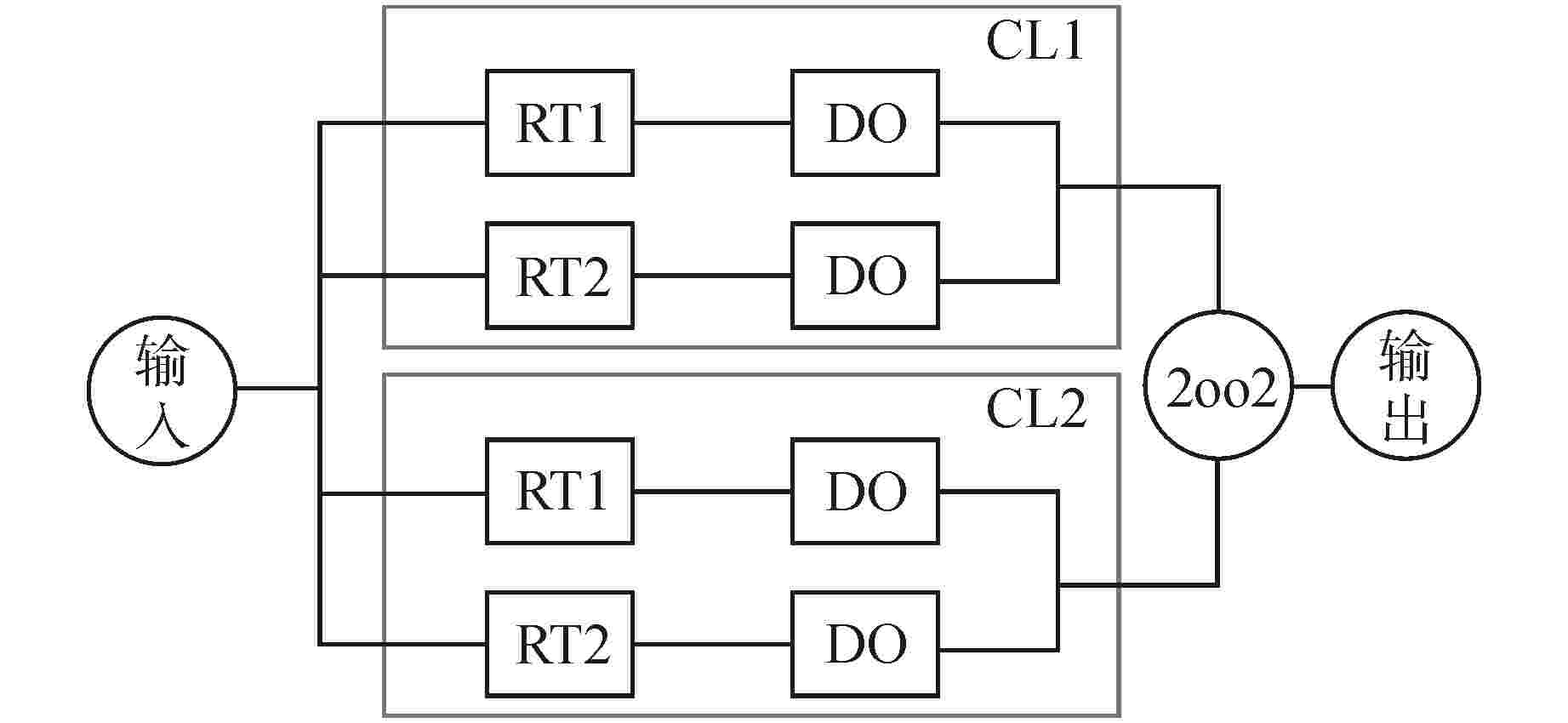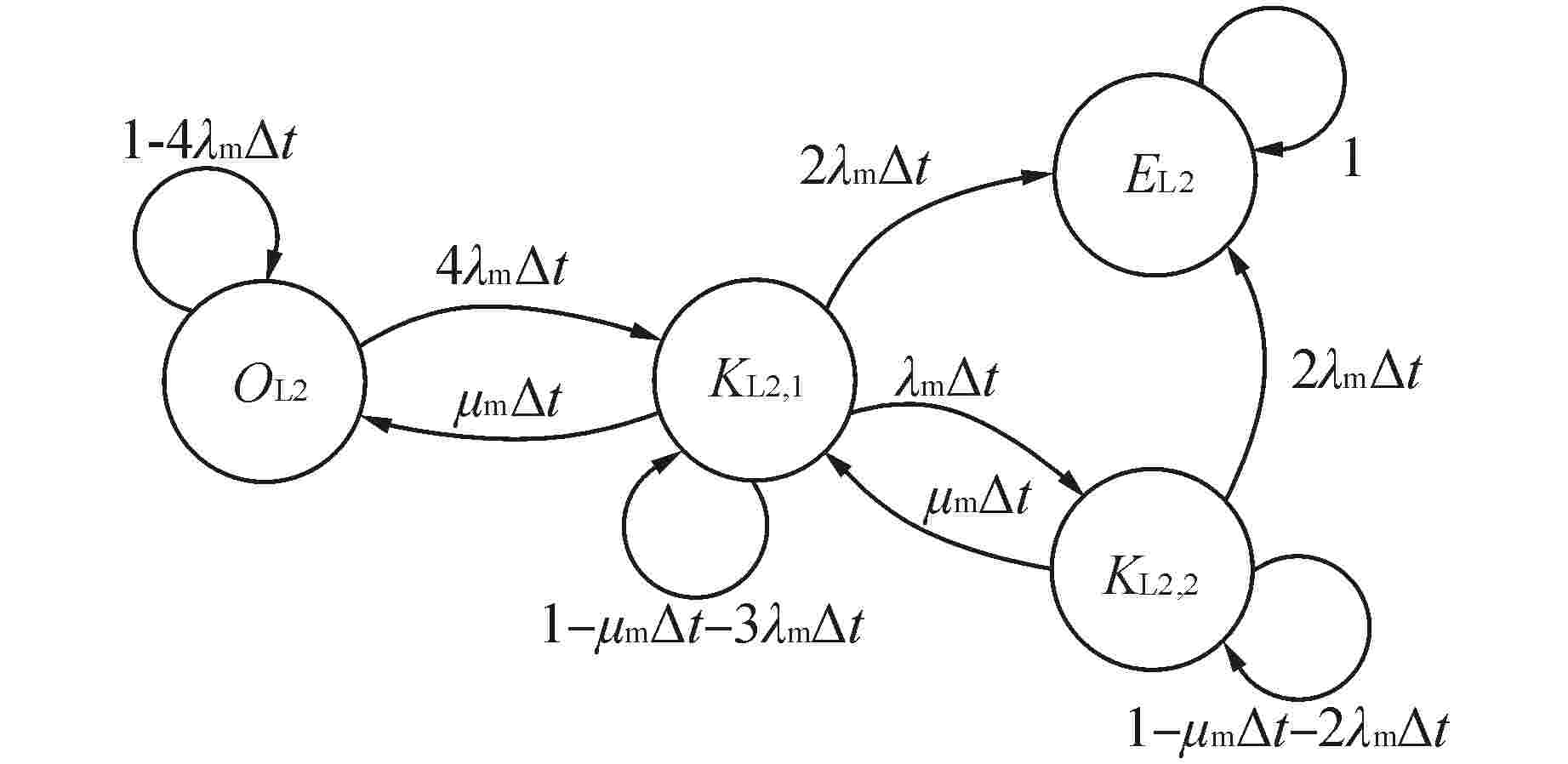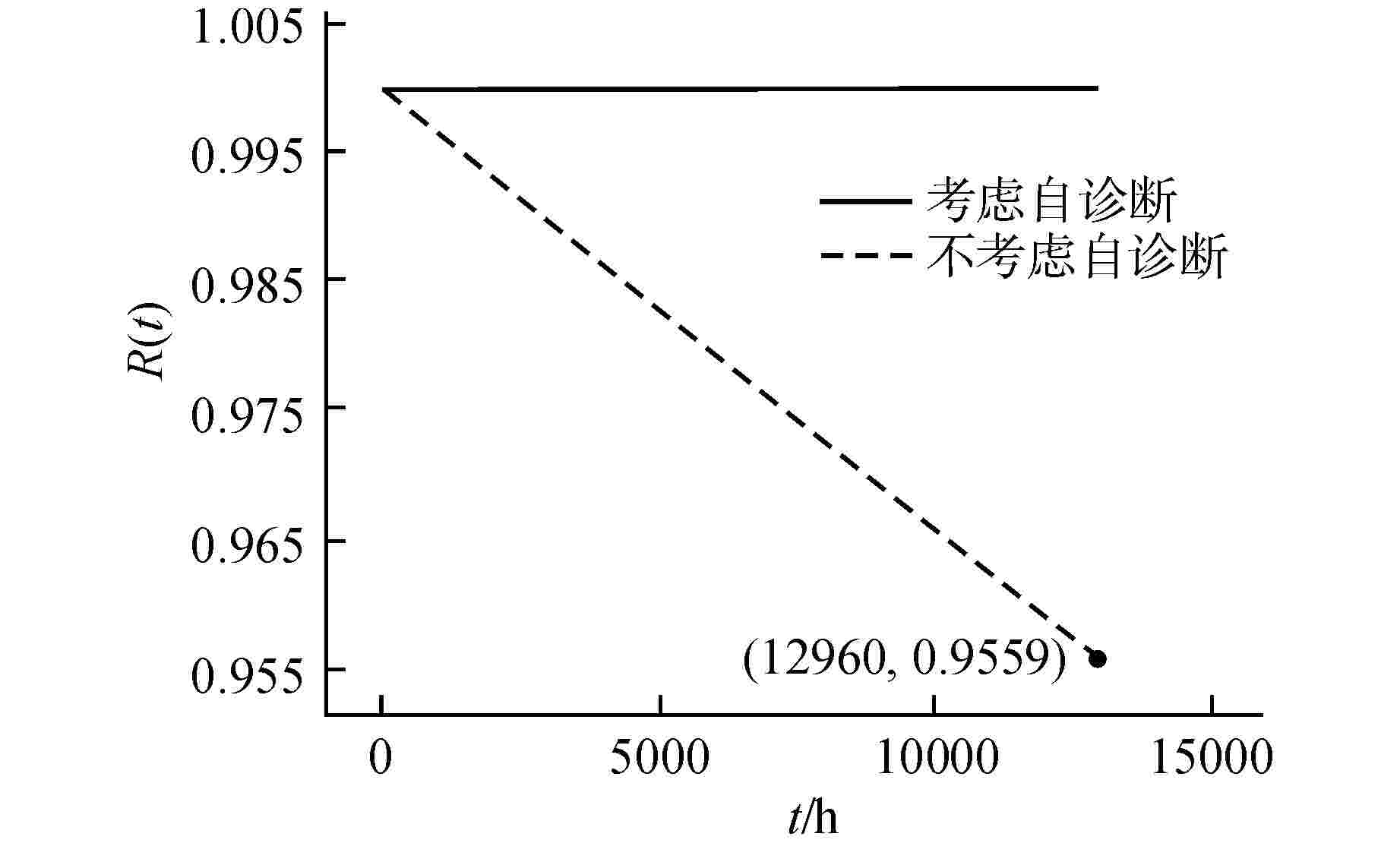Study on Reliability Evaluation Model for the Reactor Protection System Shutdown Function Considering Self-diagnostics
-
摘要: “在线自诊断”作为数字化仪控系统的重要特征,对核电厂反应堆保护系统(RPS)停堆功能的可靠性分析具有重要作用。通过分析自诊断对人因、定期试验等因素的影响,建立设备级误动模型;以典型RPS TX为例,通过马尔科夫方法建立动态的TX序列级和系统级模块误动模型;利用系统级模块误动模型定量计算TX停堆功能可靠度与自诊断的关系。通过定性分析与定量计算论证了综合考虑自诊断对RPS停堆功能可靠性分析的必要性,为后续国内RPS停堆功能的可靠性评价提供了借鉴。Abstract: As an important feature of digital instrument control system, online self-diagnostics plays an important role in the reliability analysis of shutdown function of reactor protection system (RPS) in nuclear power plant. By analyzing the influence of self-diagnostics on human factors and periodic testing, the component-level spurious actuation model was established. Taking a typical RPS TX as an example, the dynamic TX sequence-level and system-level module spurious actuation models are established by Markov method. The relationship between TX shutdown function reliability and self-diagnostics is quantitatively calculated by using the system-level module spurious actuation model. Through qualitative analysis and quantitative calculation, the necessity of comprehensive consideration of self-diagnostics in RPS shutdown function reliability analysis is demonstrated, which provides a reference for the subsequent reliability evaluation of RPS shutdown function in China.
-
图 8 考虑ASD的系统级Level模块误动故障马尔科夫状态转移图
KS2,1—仅ASD发生故障;KS2,2—在ASD故障的情况下TX的一个序列发生故障,此时TX未切换逻辑;KS2,3—2oo4表决逻辑TX的一个序列发生故障,此时ASD正常,自动切换成2oo3表决逻辑;KS2,4—2oo3表决逻辑TX的ASD发生故障;KS2,5—ASD故障条件下2oo3表决逻辑TX的一个序列发生故障;KS2,6—2oo3表决逻辑TX的一个序列发生故障,TX切换成1oo2表决逻辑;ES2,1—2oo4表决逻辑TX的2个序列发生故障,触发停堆;ES2,2—1oo2表决逻辑TX出现序列故障,触发停堆;ES2,3—2oo3表决逻辑TX的2个序列发生故障,触发停堆;$ {\mu }_{\mathrm{d}} $—ASD设备的修复率,考虑其平均修复率为0.2;下标S2—考虑自诊断的系统级Level模块
Figure 8. System-level Spurious Actuation Fault Markov State Transition Diagram Considering ASD
表 1 RPS停堆子系统设备初始数据和计算结果
Table 1. Initial Data and Calculated Results of RPS Shutdown Subsystem Equipment
设备名称 λr/h−1 N Pd λS/h−1 λw/h−1 PI 1.20×10−5 6 0.9 1.200010×10−5 1.22×10−5 DI 1.25×10−6 6 0.9 1.250100×10−6 1.40×10−0 AI 1 3.66×10−5 6 0.9 3.660011×10−5 3.68×10−5 AI 2 3.58×10−6 6 0.9 3.580100×10−6 3.73×10−6 PM1(2) 1.31×10−5 6 0.99 1.310010×10−5 1.32×10−5 RT 1.31×10−5 2 0.99 1.310010×10−5 1.32×10−5 DO 1.39×10−6 2 0.9 1.390100×10−6 1.54×10−6 RTCB 1.00×10−6 2 0 1.000100×10−6 1.15×10−6 表 2 2种情况下序列级各Level模块故障率
Table 2. Failure Rate of Each Sequence-level Module under Two Conditions
故障率 考虑自诊断 不考虑自诊断 $ {\lambda }_{\mathrm{L}1} $/h−1 2.39526×10−4 2.41996×10−4 $ {\lambda }_{\mathrm{L}2} $/h−1 4.30211×10−9 8.72537×10−9 $ {\lambda }_{\mathrm{L}3} $/h−1 1.00019×10−11 1.33279×10−11 表 3 TX单序列/停堆功能故障率与
$ {\lambda }_{\mathrm{d}} $ 和γ的关系Table 3. Relationship between the Failure Rate of TX Single Sequence/Shutdown Function and the
$ {\lambda }_{d} $ and γ条件 $ {(\lambda }_{\mathrm{L}1} $+$ {\lambda }_{\mathrm{L}2} $+$ {\lambda }_{\mathrm{L}3}) $/h−1 TX停堆功能故障率/h−1 不考虑自诊断, γ=0.002 2.420043×10−4 3.40549×10−6 不考虑自诊断, γ=0 2.395324×10−4 3.33801×10−6 $ {\lambda }_{\mathrm{d}} $=1×10−10 h−1, γ=0 2.395299×10−4 2.22161×10−9 $ {\lambda }_{\mathrm{d}} $=1×10−10 h−1, γ=0.002 2.395299×10−4 2.22162×10−9 $ {\lambda }_{\mathrm{d}} $=1×10−8 h−1, γ=0.002 2.396885×10−4 2.22608×10−9 $ {\lambda }_{\mathrm{d}} $=1×10−6 h−1, γ=0.002 2.555432×10−4 2.70362×10−9 $ {\lambda }_{\mathrm{d}} $=1×10−5 h−1, γ=0.002 3.996783×10−4 1.04573×10−8 $ {\lambda }_{\mathrm{d}} $=1×10−4 h−1, γ=0.002 1.841119×10−3 1.01053×10−6 -
[1] KIM J, PARK J, JUNG W, et al. Characteristics of test and maintenance human errors leading to unplanned reactor trips in nuclear power plants[J]. Nuclear Engineering and Design, 2009, 239(11): 2530-2536. doi: 10.1016/j.nucengdes.2009.06.010 [2] 张栋良,张凯文,张超凡. 基于FPGA的反应堆保护系统可靠性建模与分析[J]. 核动力工程,2021, 42(5): 173-177. doi: 10.13832/j.jnpe.2021.05.0173 [3] KHALAQUZZAMAN M, KANG H G, KIM M C, et al. A model for estimation of reactor spurious shutdown rate considering maintenance human errors in reactor protection system of nuclear power plants[J]. Nuclear Engineering and Design, 2010, 240(10): 2963-2971. doi: 10.1016/j.nucengdes.2010.05.031 [4] 李明利,石桂连,唐环. 逻辑退化对数字化核反应堆保护系统可靠性的影响[J]. 核动力工程,2012, 33(2): 21-24. doi: 10.3969/j.issn.0258-0926.2012.02.005 [5] 严吉倩,张存光,高翔,等. CAP1400反应堆保护系统定期试验方案研究[J]. 山东工业技术,2019(5): 81-82,101. doi: 10.16640/j.cnki.37-1222/t.2019.05.074 [6] 杜乔瑞,齐敏,石桂连,等. 核安全级仪控系统(FirmSys)平台软件设计技术研究与实现[J]. 自动化博览,2018, 35(5): 66-71. doi: 10.3969/j.issn.1003-0492.2018.05.024 [7] 张蔚,张淑慧,徐冬苓. 两种安全级仪控系统拒动率计算方法的比较[J]. 仪器仪表用户,2021, 28(1): 60-64. doi: 10.3969/j.issn.1671-1041.2021.01.015 [8] KHALAQUZZAMAN M, KANG H G, KIM M C, et al. Quantification of unavailability caused by random failures and maintenance human errors in nuclear power plants[J]. Nuclear Engineering and Design, 2010, 240(6): 1606-1613. doi: 10.1016/j.nucengdes.2010.03.001 [9] 刘艳阳,刘明星,雷敏杰,等. 安全级DCS“龙鳞系统”研制综述及展望[J]. 中国核电,2019, 12(5): 537-541. [10] ALDEMIR T, GUARRO S, MANDELLI D, et al. Probabilistic risk assessment modeling of digital instrumentation and control systems using two dynamic methodologies[J]. Reliability Engineering & System Safety, 2010, 95(10): 1011-1039. [11] 王伟,赵军,童节娟,等. 反应堆保护系统可靠性指标的评价方法研究[J]. 原子能科学技术,2015, 49(6): 1101-1108. doi: 10.7538/yzk.2015.49.06.1101 -






 下载:
下载:












